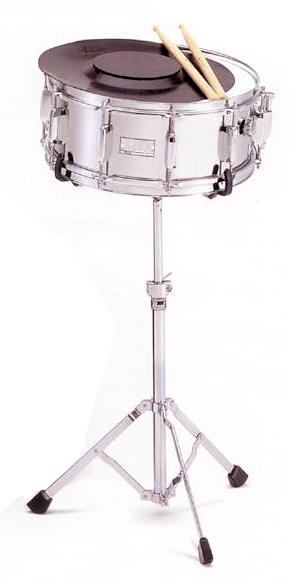Drum Rudiments are one of the most important aspects of drumming. They are the building blocks to every drum beat, pattern, fill, and solo. Whatever your skill level is on the drums, practicing your rudiments is a must. Even if you are an advanced drummer, it’s always good to go over some of the more technical rudiments. There are 40 drum rudiments; some more complicated then the other. Out of those 40, there are about 5 essential rudiments that are a must for practicing. Read this article to learn the importance of drum rudiments, and gain a little bit of insight as to what a drum rudiment really is. If you would like to start learning some of these patterns, you can check out the drum rudiments video lesson section of FreeDrumLessons.com.
Many of you may be unfamiliar with the term Rudiments; however, do not worry. Drum rudiments aren’t a concept you aren’t aware of, maybe just a term you haven’t heard before. A drum rudiment is basically a sticking pattern. Every sticking pattern you play on the drum set is derived from different drum rudiments. Most are very common patterns that you are well aware of like the single stroke roll, double stroke roll, and flam stroke. Some are more complex and difficult to play. The next time you play the drums, you should look and see what rudiments you are actually playing. Drum rudiments are the essentials of drumming; they should be practiced by drummers to increase their stick control, speed and independence.
You may have heard of the 40 Essential Drum Rudiments before; this is the list of rudiments that are played. They say if you master the 40 essential rudiments you are on your way to becoming a professional drummer. This is very true; if you can identify and play each one of these rudiments you will have built up enough knowledge and stick control to be a very skilled drummer. However, this takes a lot of work. Here is the list of rudiments:
 Six Stroke Roll
Six Stroke Roll
Like I have said before, practicing these drum rudiments are very important. The best way to practice these is to take a pair of drum sticks, a metronome, and a practice pad and start playing. Make sure you are playing with a metronome to keep yourself on time. If you do not know where to start, here is a list of the top 5 rudiments you should start with:
the single stroke roll, the double stroke roll, the flam stroke, the paradiddle, and the double paradiddle. These are the top 5 rudiments you should start with, as each one will teach you speed, control, independence and endurance on your sticks. Make sure you read up on these
essential practice tips before you begin playing these rudiments; it will help you out a lot!
Most of the drum rudiments are variations of each other, meaning it is not too hard to learn all 40 rudiments. For example, if you can play a flam stroke, and a paradiddle pattern, you should have no trouble playing the flam paradiddle. In any case take the time to go over each one if you can.
Drum rudiments are more than just sticking patterns you practice on a practice pad. They are designed to be played in common drumming applications. What this means is they are designed to be played in drum beats, fills, and solos. Check out the
drum rudiments section in the drum lessons tab to see a variety of applications for each rudiment. Here you will learn how to play each rudiment in its most simplistic form, as well as complex drum beats and drum solos! For an added challenge, try to incorporate these rudiments into your
double bass drumming!
You can learn how to play all 40 drum rudiments with the Drumming System by Mike Michalkow!